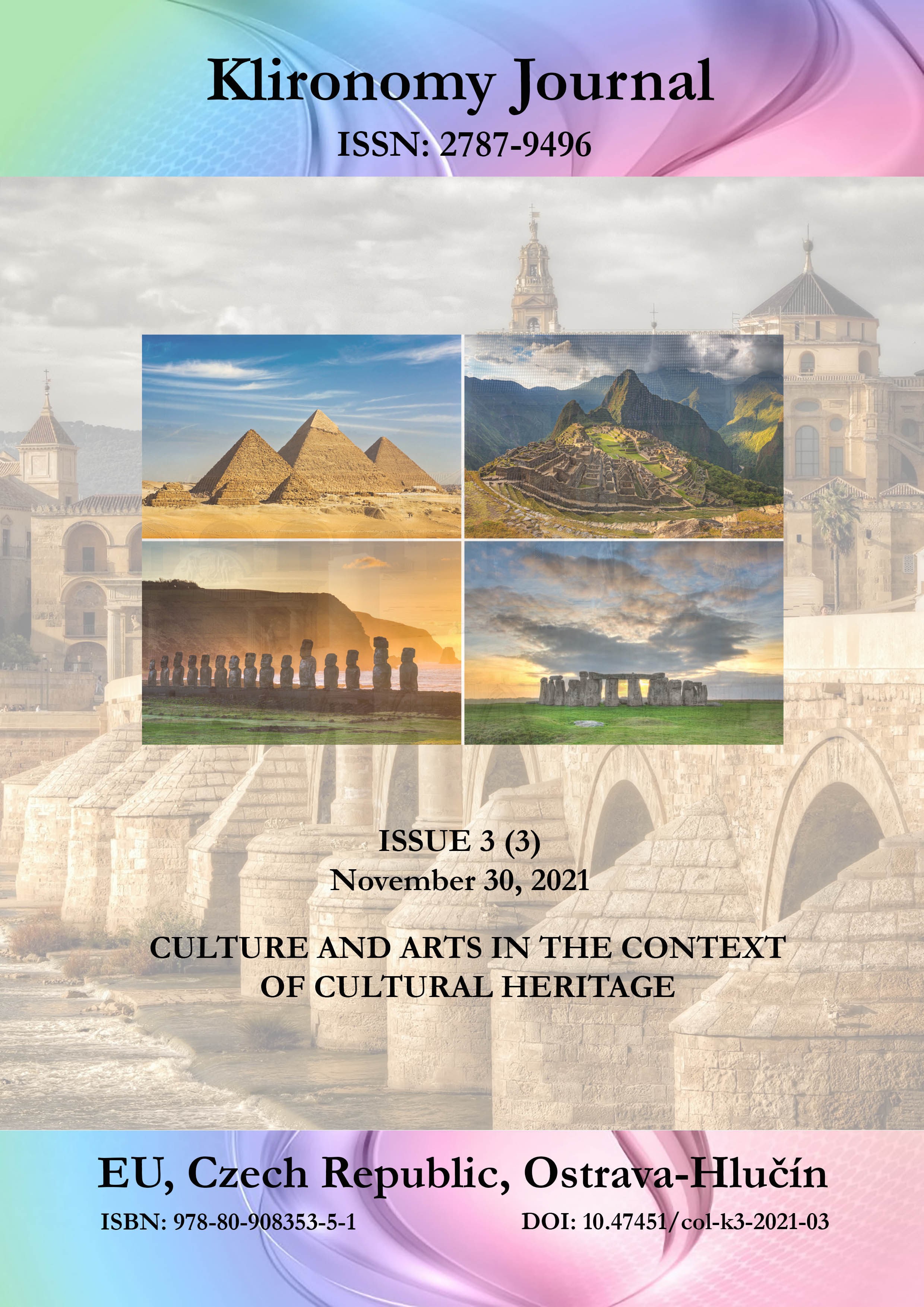The Human Voice as a Genius Instrument to Be Trained
DOI:
https://doi.org/10.47451/art2021-10-005Keywords:
voice, human voice, practice, speech, voice expression, academic voice, natural voice, diction, phonetic, oratory, singingAbstract
The professionalism of the Voice is the ability to control the human voice to activate and use it with all its expressive and influential capabilities. Voice control means learning it through analysis and theoretical and scientific analysis, and then installing it with the desired or proposed template from the student and analyst to give him the best cases in expression. This means submission to the state of training and practice of human voice with all its various data and points of performance, and, thus, the establishment of a methodology and schedule suitable for a professional purpose, scientifically applied (Scientifique—pratique) or inborn (Naturel—experimental). The former shortens the time devoted to professionalism, while the latter takes longer to increase productivity and remains free from the analysis and science that the former includes. Academic experience today has confirmed that each scientific phenomenon creates its own science and knowledge and becomes open for teaching at the university and specializes in its work and professionalism. And when knowledge precedes what is known about it, it reduces time and reduces the difficulties of confrontation. Therefore, the professionalism of its first type (scientific and applied) became the prerogative of science, its institutes and universities, without discarding the second type (innate—experienced). The two together is the best goal, and if we prefer between them, then our choice is based on the first according to scientific preference.
Downloads
References
Al-Farabi, Abu Nasr. The Great Music Book. Investigated by Ghattas Abdel-Malik. Revised and fore worded by Dr. Mahmoud Ahmed Al-Hafni. Cairo: Dar Al-Kateb Al-Arabi for Printing and Publishing. (In Arab.)
Al-Ma’arri, Jinni, Ibn & Al-Khaymi, Ibn (1981). Three Messages in the Language. Investigated by Dr. Salah Al-Din Al-Munajjid. Beirut: Dar Al-Kitab Al-Jadeed. (In Arab.)
Anatomy of the human body (1979). In: The Higher Education Curriculum for Medicine. Moscow. (In Russ.)
Cande, Roland De (1970). Dictionnaire de musique. France: Édition du Seuil, Microcosme. (In Russ.)
Cross, Richard (1991). La voix dévoilée. Paris: Romillat. (In Russ.)
Jawhari, Tantawi. Arabic Music. (In Arab.)
Lang, Paul Henry (1985). Music in Western Civilization. Arabization of Dr. Ahmed Hamdi Mahmoud. Review d. Hussein Fawzi. Cairo: General Egyptian Book Organization. (In Arab.)
Lloyd, Séton (1984). L’archéologie de la Mésopotamie. Moscou: Naouka. (In Russ.)
Miller, Richard (1986). La structure du chant. Macmillan. (In Russ.)
Rodeleux, Louis-Jacques (1974). Trouver sa voix. Paris: Seuil. (In Russ.)
Saad, Salim (2016). The Encyclopedic Book on Music an Audio Art in Lebanon and Worldwide. Beirut. (In Arab.)
Saad, Salim (2000). The Human Voice – Genius Instrument. Beirut. (In Arab.)
Sina, Abu Ali Ibn (1333). The reasons for the occurrence of the letters. Tehran. (In Arab.)
Sons et musique. Journal annuel “Pour la science”. Édition française de. (In Russ.)
Soviet Music Encyclopedia (1973). In 6 parts. Moscow. (In Russ.)
Soviet Musical Encyclopedic Dictionary (1959). Moscow. (In Russ.)
The Torah (from the Old and New Testaments) (In Arab.)
Wardi, Mikhail Khalil Allah (1964). A Tour in the Science of Arabic Music. Baghdad. (In Arab.)
Western Musical Literature. Part One (1978). In: The Higher and Intermediate Educational Curriculum. Moscow. (In Russ.)
Published
Issue
Section
License
Copyright (c) 2025 Klironomy

This work is licensed under a Creative Commons Attribution 4.0 International License.
The Klironomy is an open access journal. Articles are available free of charge as PDF files on the website of the European Institute for Innovation Development. PDF files can be previewed with Acrobat Reader from www.adobe.com.
All articles of the Klironomy are published under a Creative Commons Attribution 4.0 Generic (CC BY 4.0) International license.
According to the Creative Commons Attribution 4.0 Generic (CC BY 4.0) International license, the users are free to Share — copy and redistribute the material in any medium or format for any purpose, even commercially (the licensor cannot revoke these freedoms as long as you follow the license terms).
Under the following terms:
- Attribution — You must give appropriate credit, provide a link to the license, and indicate if changes were made. You may do so in any reasonable manner, but not in any way that suggests the licensor endorses you or your use.
- No additional restrictions — You may not apply legal terms or technological measures that legally restrict others from doing anything the license permits.





